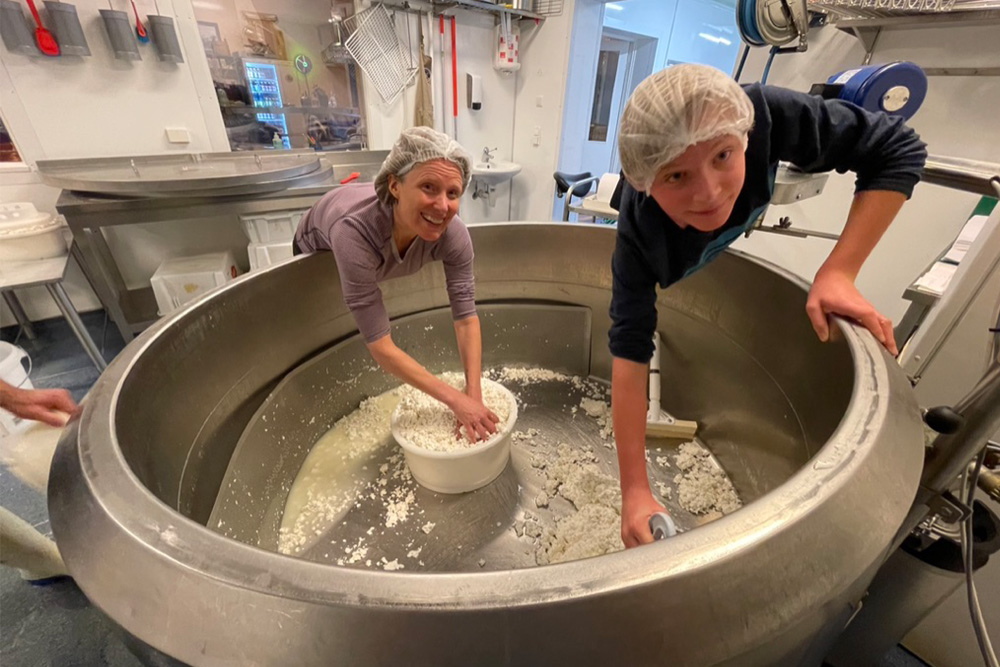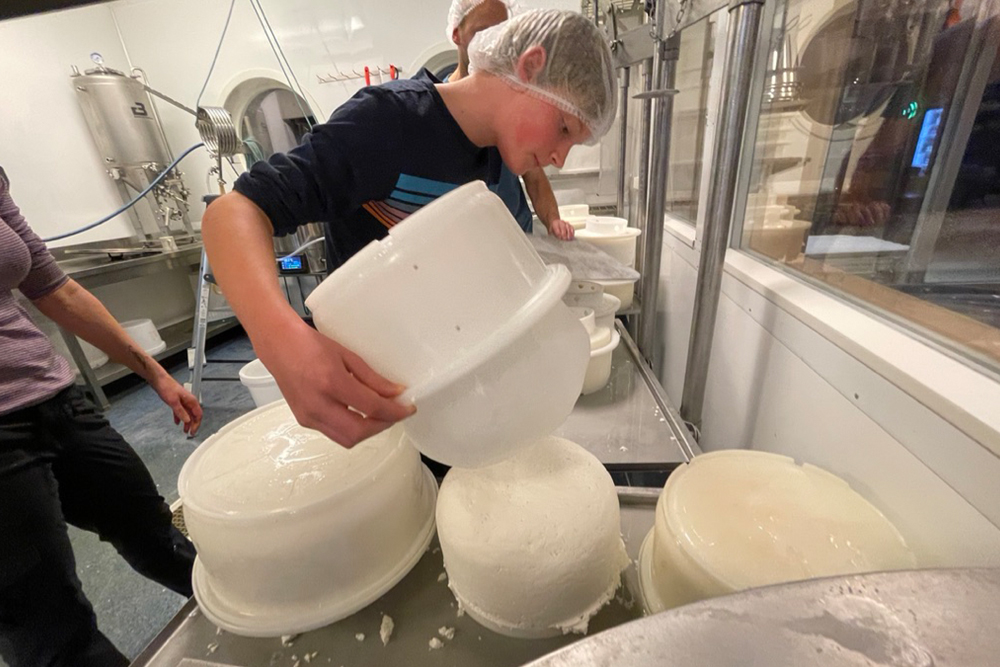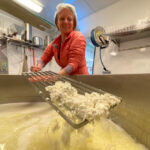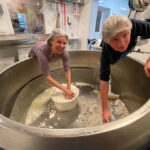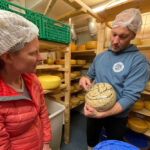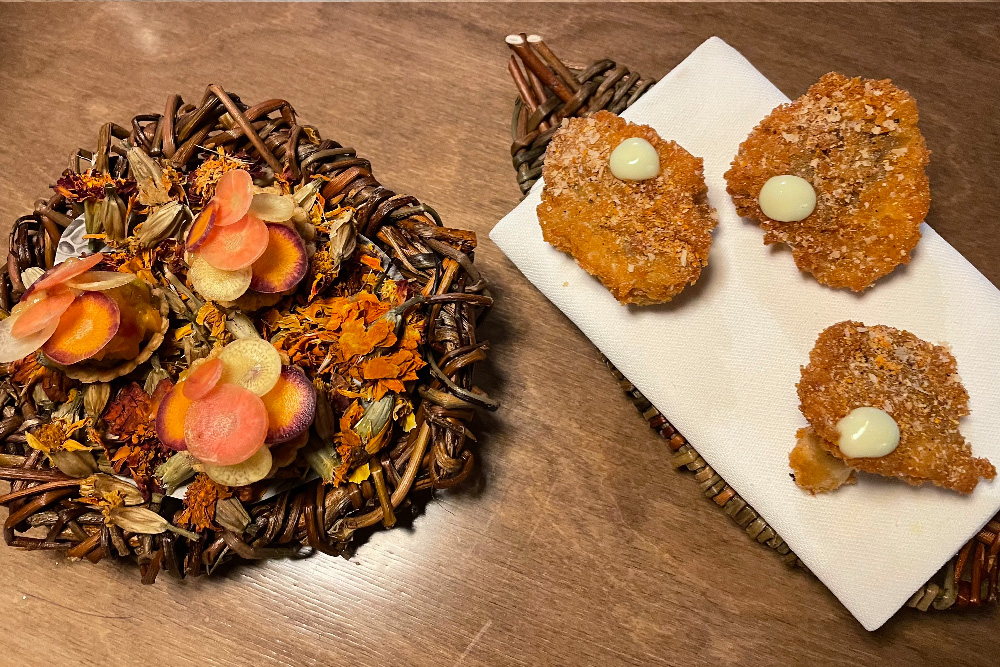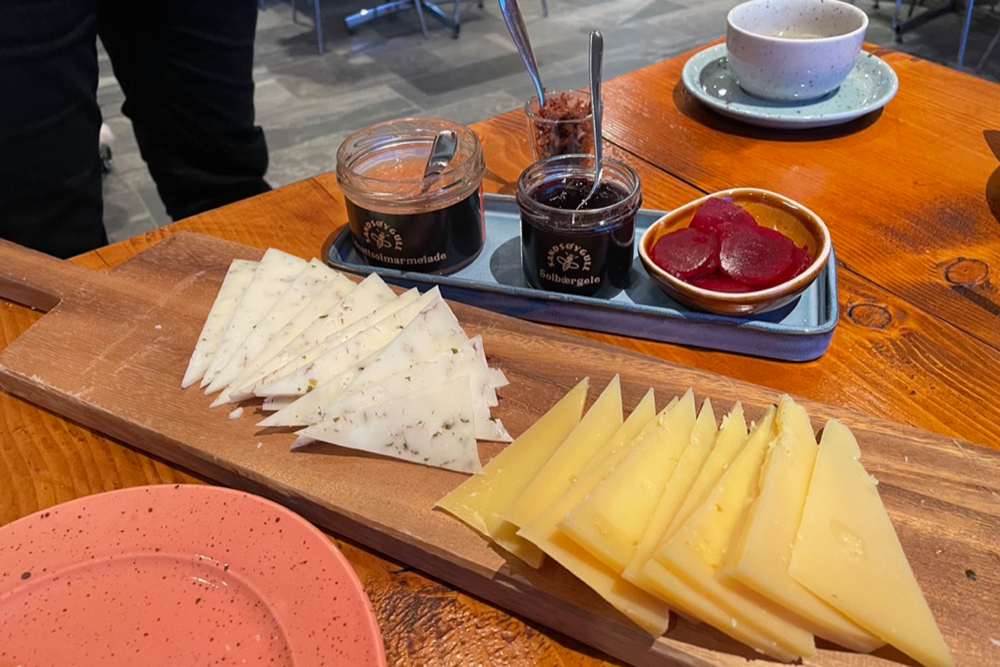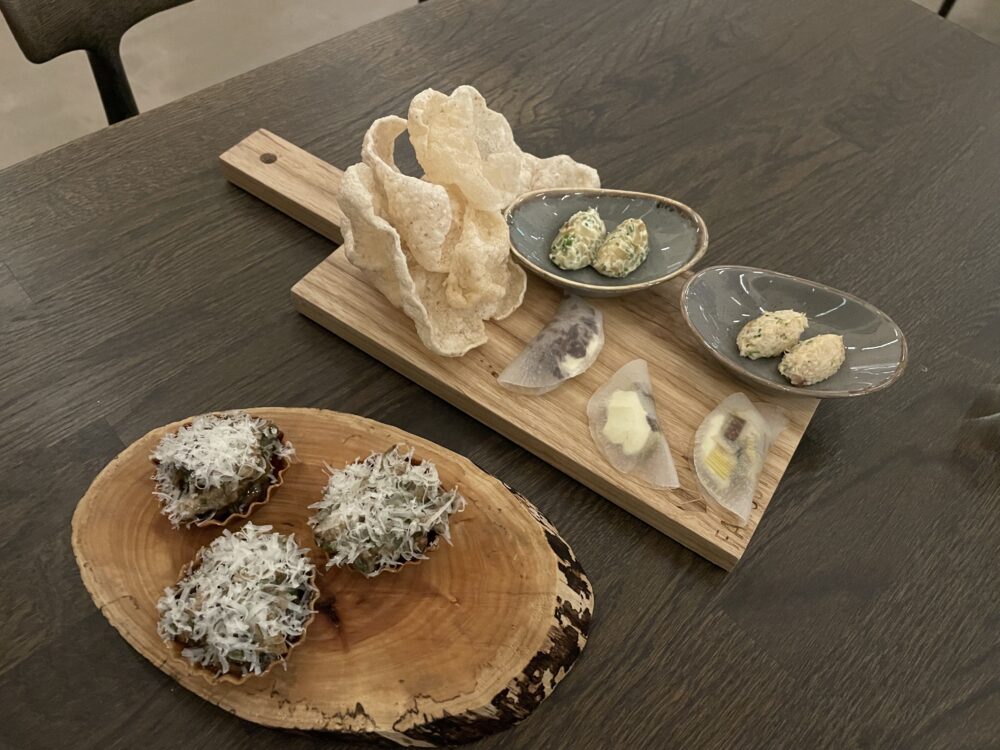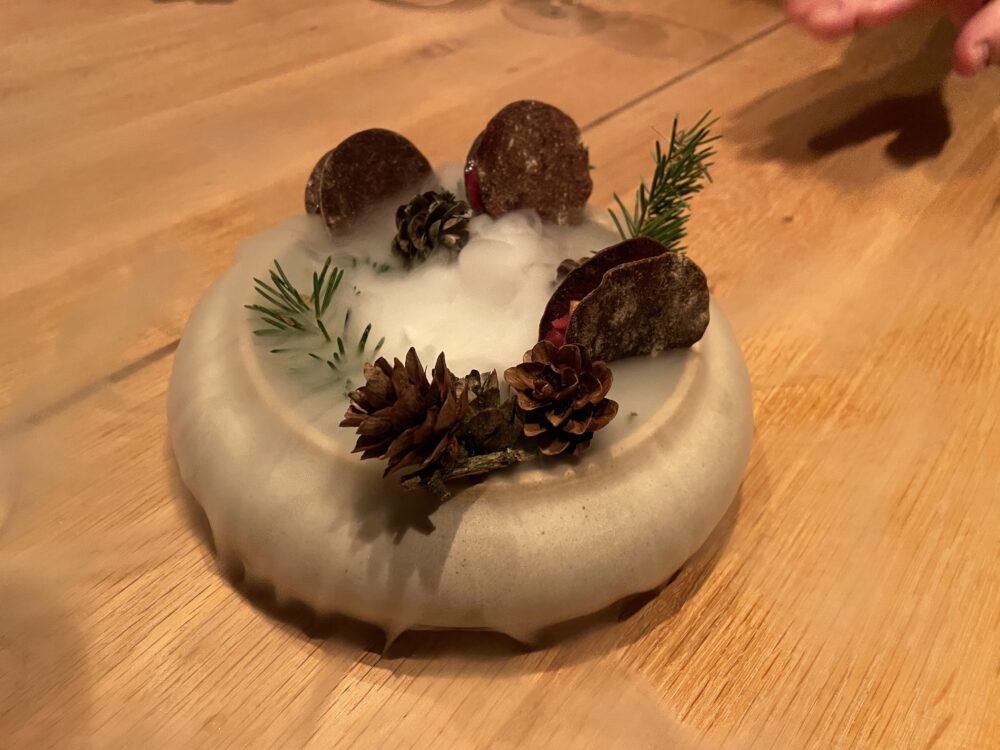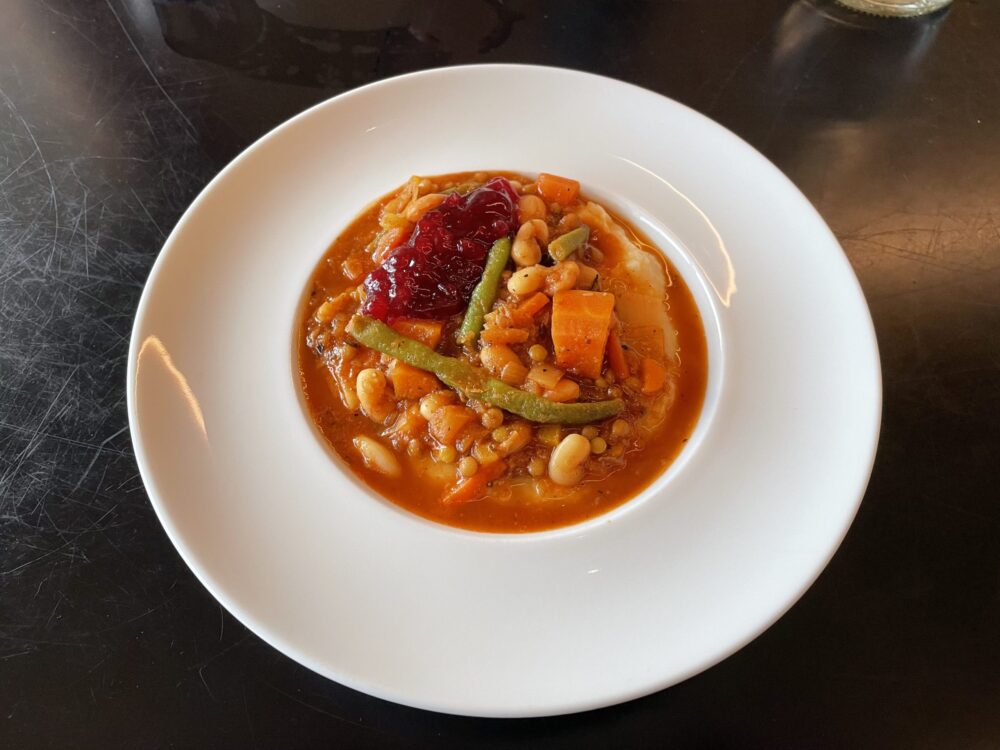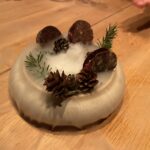Here’s Why Norway in Winter is Delightful
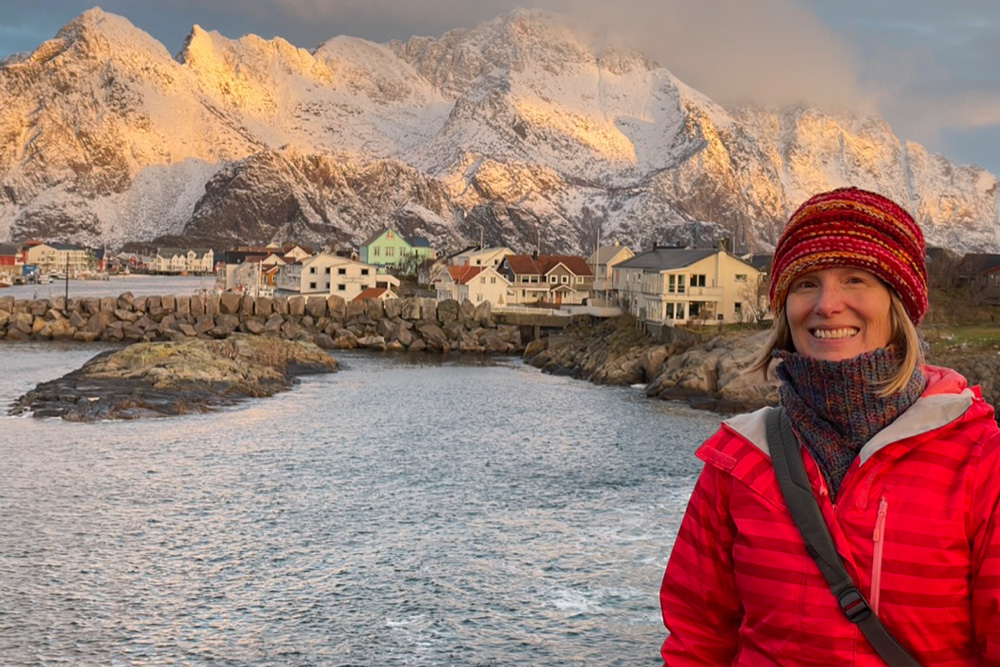 Brook in the town of Henningsvær in the Lofoten Islands, Norway. Photo: Ryan Damm
Brook in the town of Henningsvær in the Lofoten Islands, Norway. Photo: Ryan Damm Even for a dedicated off-season traveler like me, I’ll admit that going to Norway in winter initially sounded like an oxymoron. Isn’t Norway a place best experienced in summer, when you can enjoy a broad array of outdoor adventures?
Well, I am here to report that I had a fabulous 10 days in the country this past November, on a trip dreamed up by WOW Lister and Norway native Torunn Tronsvang. I discovered that it’s a brilliant destination in late fall and winter. Here’s why—based both on my own experience and on the reviews that we’ve received from your fellow travelers who planned their trips the WOW way:
You can still do many of the same things that you’d do in summer.
One of my trip’s highlights was cruising through a fjord on a private yacht. Cozily bundled in coats and hats under blankets provided by the captain, my husband, son, and I gazed up at a sheer rockface to one side of the boat, a gentler slope covered with a powdered-sugar dusting of snow to the other, and wisps of clouds lit up by the afternoon sun. During our entire time in Lysefjord, not a single other vessel came into view. Other days brought similarly quintessential Norwegian experiences—hiking a beautiful mountain trail, eating cinnamon rolls and other local delicacies, driving gorgeous coastal routes. Indeed, it is the Nordic spirit to carry on no matter the elements: We saw plenty of locals snuggled up under blankets and heat lamps outside bars and restaurants, and even playing golf when the temperature was in the high 30s.
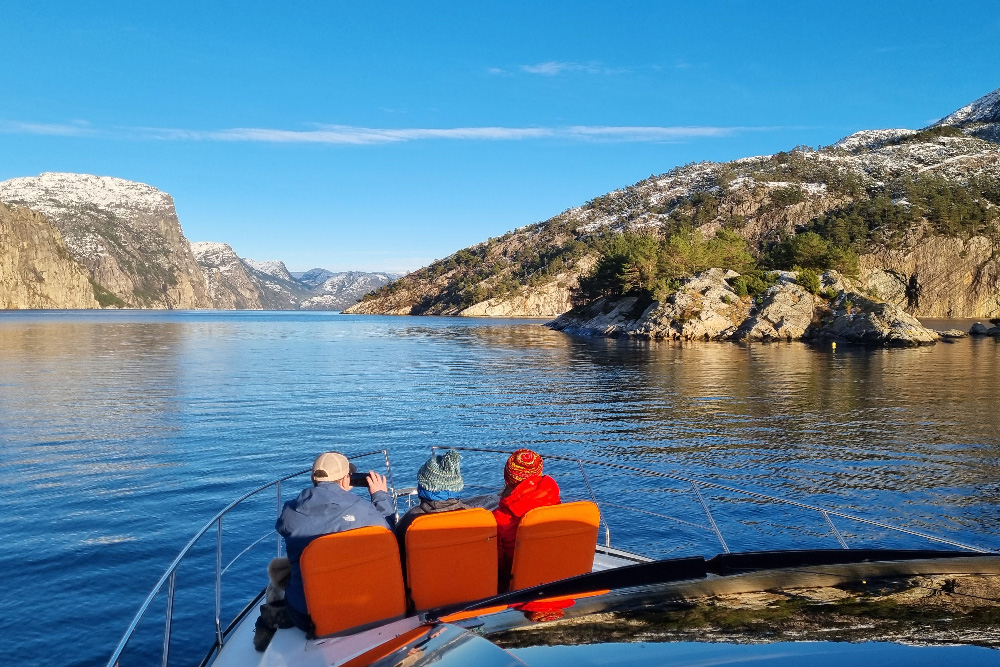
Brook and family aboard a private yacht in Lysefjord, Norway. Photo: Helge Ljones
Despite all of Norway’s natural beauty, one of my favorite afternoons was spent indoors, making cheese with a farmer. It was truly hands-on: We donned hairnets, rinsed our arms in whey up to our elbows, and then plunged them into a vat to gather the curds. Since we’d caught the farmer at a quiet time of year, he was happy to spend several hours with us. I left having a far better appreciation for the artisanal cheese-making process—and convinced that it should cost $100 a pound, given the work involved!
You can have the iconic sights largely to yourself.
Last year was Norway’s busiest ever for cruise travel, but most ships visit over the summer. I didn’t see a single cruise ship while I was there—nor, for that matter, any large groups of tourists. (This traveler similarly enjoyed a quieter experience of the Flam Railway, one of the country’s most famous train lines, in late fall.) The most popular spot on my itinerary was Pulpit Rock, which juts out over Lysefjord and provided the backdrop for the climatic fight scene in Mission: Impossible—Fallout. During the summer, 6,000-7,000 people a day hike the 2.5 miles each way to the lookout, in “two long conga lines” that my private English-speaking guide described simply as “pandemonium.” In contrast, we saw only a handful of people on the day we visited and even had the iconic spot all to ourselves for some time.
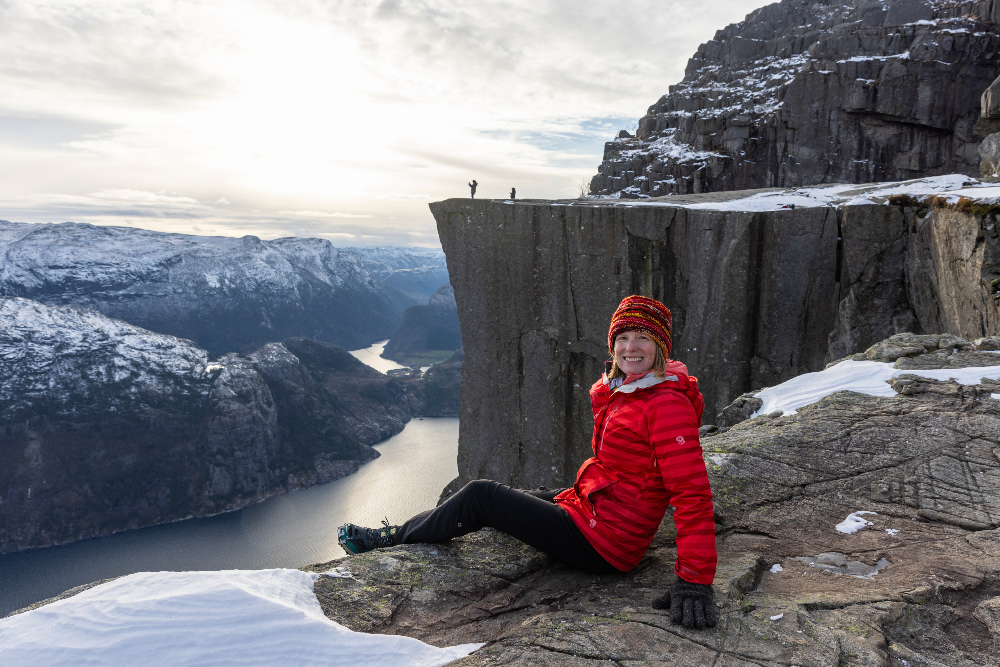
Brook in front of Pulpit Rock above Lysefjord, Norway. Photo: Erlend Berne
You can see the northern lights.
Sightings of the aurora borealis can happen in Norway from late August through March. WOW List travelers have combined northern-lights viewing with ice fishing and snowshoeing in February, and with dogsledding and meeting the Sami people in March. The advantage of seeing them in November, I found, was that I didn’t have to wait until the wee hours for total darkness: I saw the northern lights twice, both times around 7 p.m.
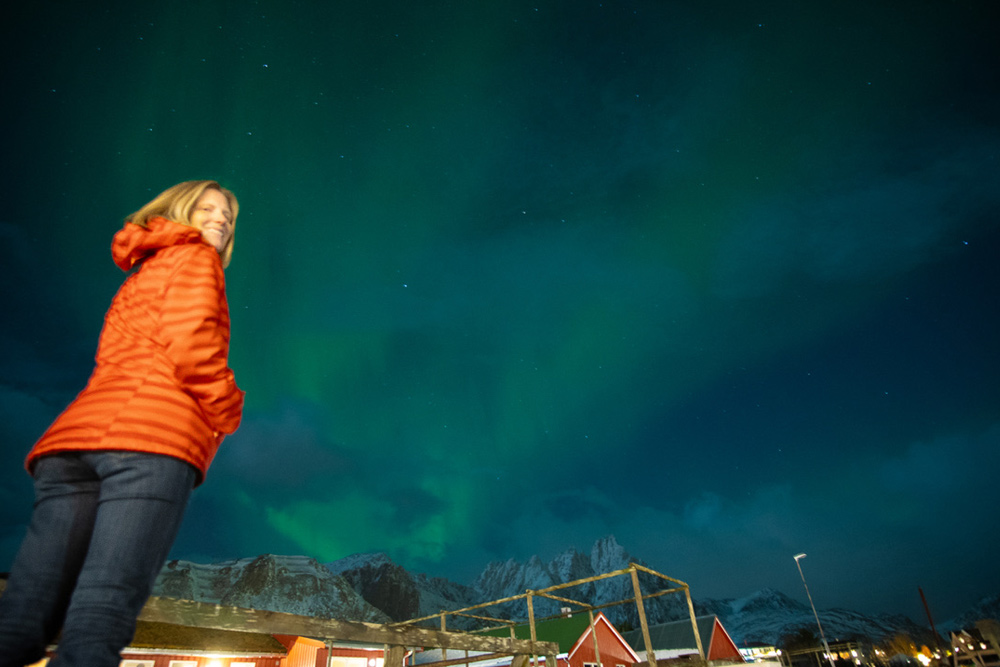
Brook takes in the northern lights from Hattvika Lodge in the Lofoten Islands. Photo: Ryan Damm
When the days are short, the light is gorgeous.
Above the Arctic Circle, the days constrict quickly in November, going from seven hours of sunlight early in the month to just two and a half by the end. What those numbers obscure is the quality of that light—with the sun always low on the horizon and high clouds often adding texture, it’s nearly impossible to take a bad photo—and the additional periods of dawn and dusk when you can still be exploring outdoors.
That said, if you want more sunlight, go in late February or March, when the days are roughly equivalent to what you get in the United States.
The limited daylight forces Type-A travelers to slow down.
I’m a no-FOMO kind of traveler. Do I usually cram in too much? Probably. So I actually came to appreciate the dark morning and afternoon hours of Norway’s off-season. It forced me to slow down both body and brain. It helped me start to understand the Norwegian way of life. It made room in the day for my family to play board games, stoke a fire in our cabin’s fireplace, or relax together in a hot tub. (My adolescent son was also thrilled that this was the rare trip on which he was allowed to sleep in.)
Norway’s weather is changeable at any time of year.
You can get a rainy day with 50-degree temperatures in July just as easily as in December; sweaters and raingear are essential items even in summer. The day before the worst storm that I encountered in my travels, another group had been sea-kayaking in the same spot on water that they described as glass-smooth. You wouldn’t know it when the schools shut down the next day due to sideways-pelting rain, but our private guide ably pivoted our itinerary from the intended hike to instead visit a not-yet-open-to-the-public fishing museum created by her uncle. And that was the only day of the trip when the weather forced a change in our plans.
It’s a winter wonderland.
As a Californian who lives far from snow, encountering it during our trip was a plus. You may not feel the same if you have to shovel it off your front path every winter, but the dusting of white—aided by the Christmas decorations in many cities and hotels, even a twinkling tree in our room at the Eilert Smith Hotel—made the trip feel like the kickoff to a cheery, festive season.
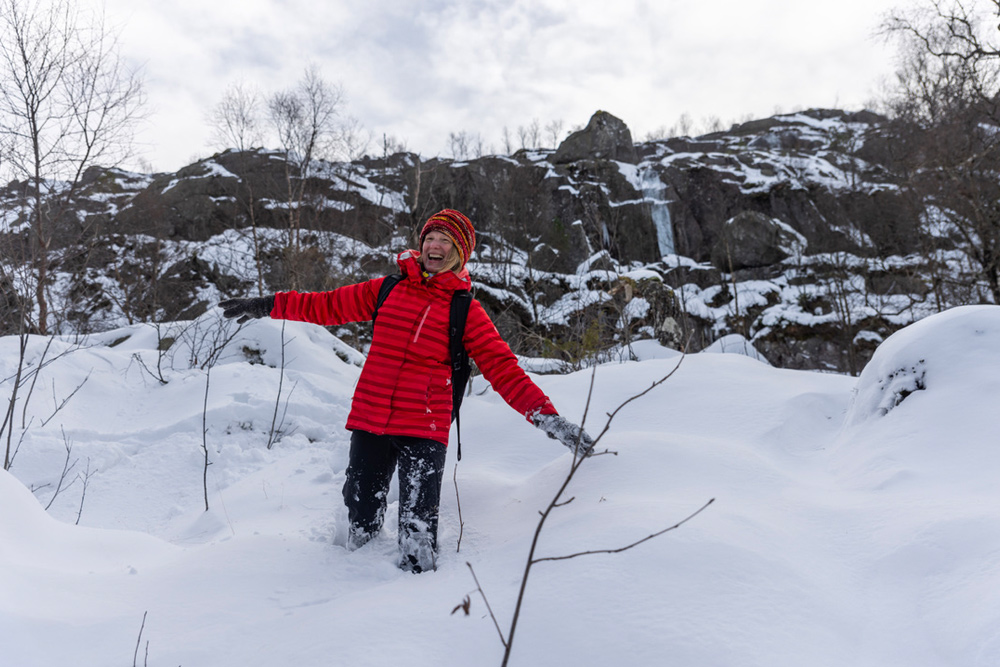
Brook goes off-trail to romp in some snow on the way to Pulpit Rock. Photo: Erlend Berne
There was snow in the hills we hiked near the southern coastal city of Stavanger (where temperatures were usually in the 40s, equivalent to New York City that month); up above the Arctic Circle in the Lofoten Islands, there was snow all the way down to sea level, and temperatures topped out at 35 degrees. But it was also the most beautiful place I think I’ve ever been in my life:
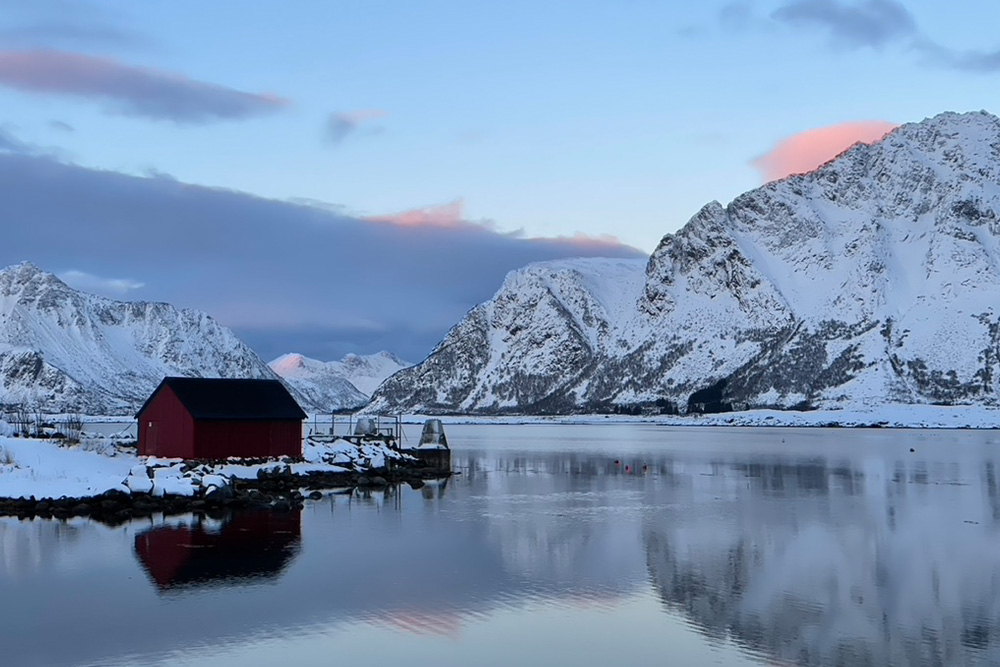
One of many picturesque spots in the Lofoten Islands, burnished with November light. Photo: Ryan Damm
Sidewalks and paths can be slippery; if you’re not sure-footed (and even if you are), a device like Yaktrax will be enormously helpful.
You can have your choice of accommodations.
Norway’s hotels typically have just a handful of rooms, so they book up six months or more in advance for the summer high season. In winter, you have your pick of places to stay (excepting the most popular northern lights-viewing lodges) and aren’t left piecing together an itinerary based on whatever availability remains. This is not the trip on which to be stingy about your accommodations, either: You’ll be spending time there in those darker cozy hours, so give yourself room to spread out.
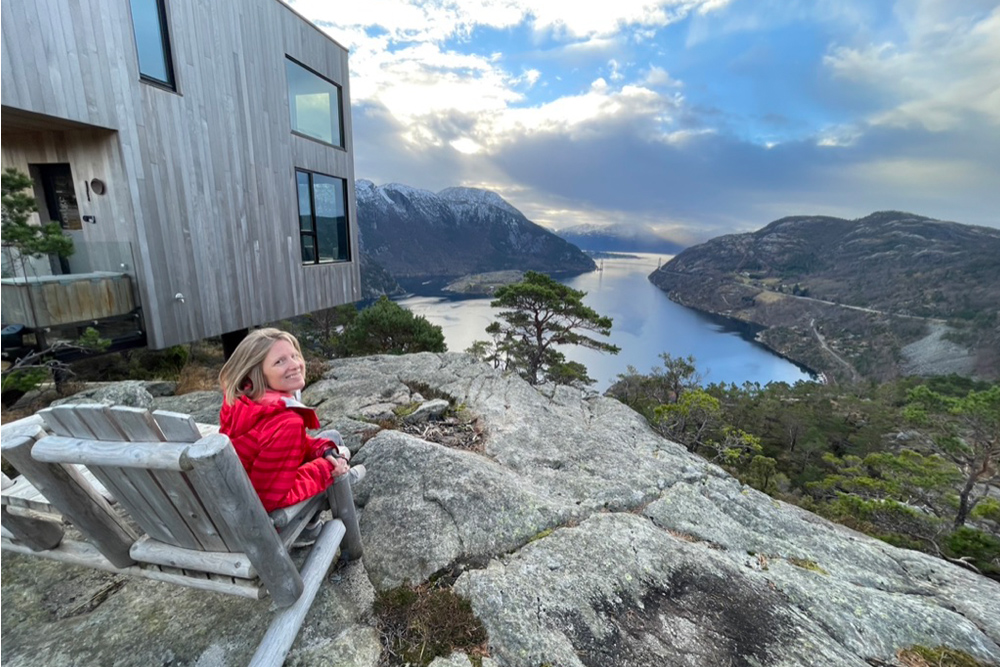
Brook at The Bolder, a collection of cabins high above Lysefjord. Photo: Ryan Damm
You won’t miss your holiday feasts back home.
I wasn’t prepared for just how delicious the food was in Norway. Even when abrupt hunger pangs sent us to the first open restaurant, or a late-arriving flight made take-away in our hotel room the best option, we were served top-shelf meals, from a halloumi sandwich at a burger bar to legitimately spicy Thai noodles.
As a vegetarian, I tested the country’s commitment to local and seasonal ingredients—and came away impressed by the variety of produce I was served, from beets to celery root to mushrooms to kale, often flavored with pickled herbs. My husband enjoyed local lamb, reindeer, and of course, fish. This family enjoyed a fancy New Year’s Eve dinner at their Oslo hotel, followed by a midnight toast on the roof.
Oslo’s many museums are ideal sanctuaries on short, chilly days.
The only time I felt truly cold during my trip was when the temperature in Oslo dipped well below freezing. No matter: I explored the city by hopscotching from one toasty museum to the next. I saw multiple iterations of Edvard Munch’s The Scream, the study in which Henrik Ibsen wrote his last play, and secret messages circulated by the Norwegian resistance during World War II. But my favorite museum moment was walking around and under the original Kon-Tiki raft with Liv Heyerdahl, whose grandfather Thor built the bamboo-and-balsa vessel 75 years ago and then successfully sailed it from South America to Polynesia.
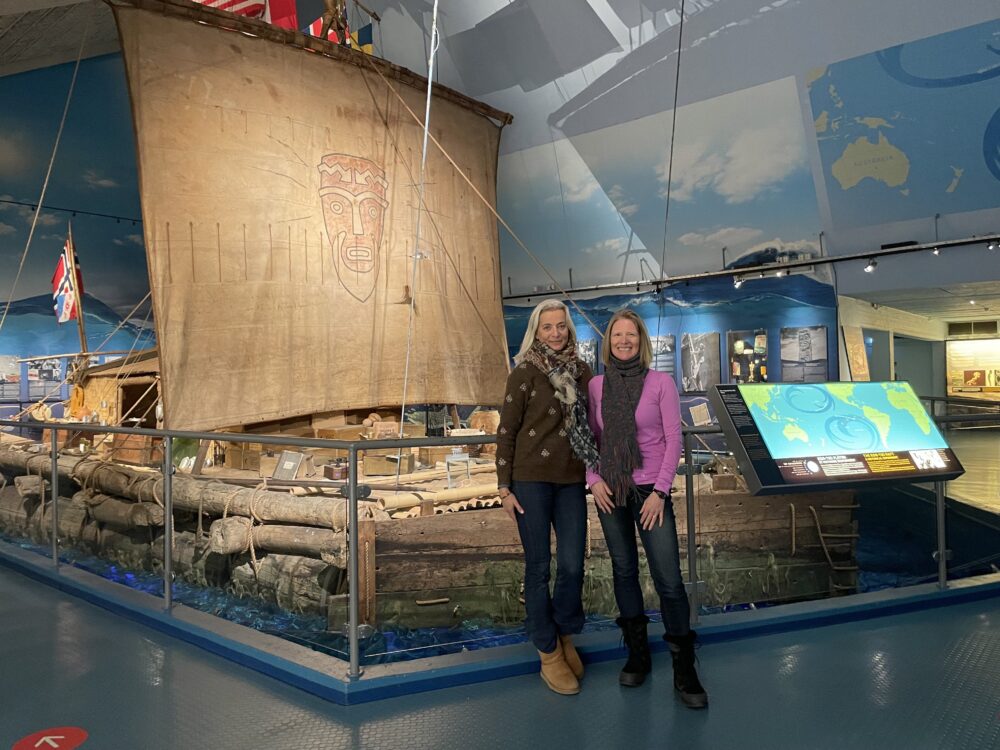
Brook at the Kon-Tiki Museum with Liv Heyerdahl, granddaughter of famous Norwegian explorer Thor Heyerdahl.
Intrigued by an off-season adventure in Norway? Here’s one more reason why the next few years are a good time to go: The solar activity that causes the northern lights to appear runs in roughly 11-year cycles, with the next peak happening in July 2025.
Transparency disclosure: Some experiences described here were provided to Brook for free or at reduced rates. In keeping with our standard practice, there was no promise of editorial coverage in exchange: Complimentary or discounted travel never influences our reportage. All of these experiences are accessible to every traveler who uses Wendy’s WOW questionnaire. Thanks to Wendy’s WOW system, you’ll get marked as a VIP traveler.
Be a smarter traveler: Sign up for Wendy’s weekly newsletter to stay in the know. Read real travelers’ reviews, then use the black CONTACT buttons on Wendy’s WOW List to reach out to the right local fixer for your trip.


